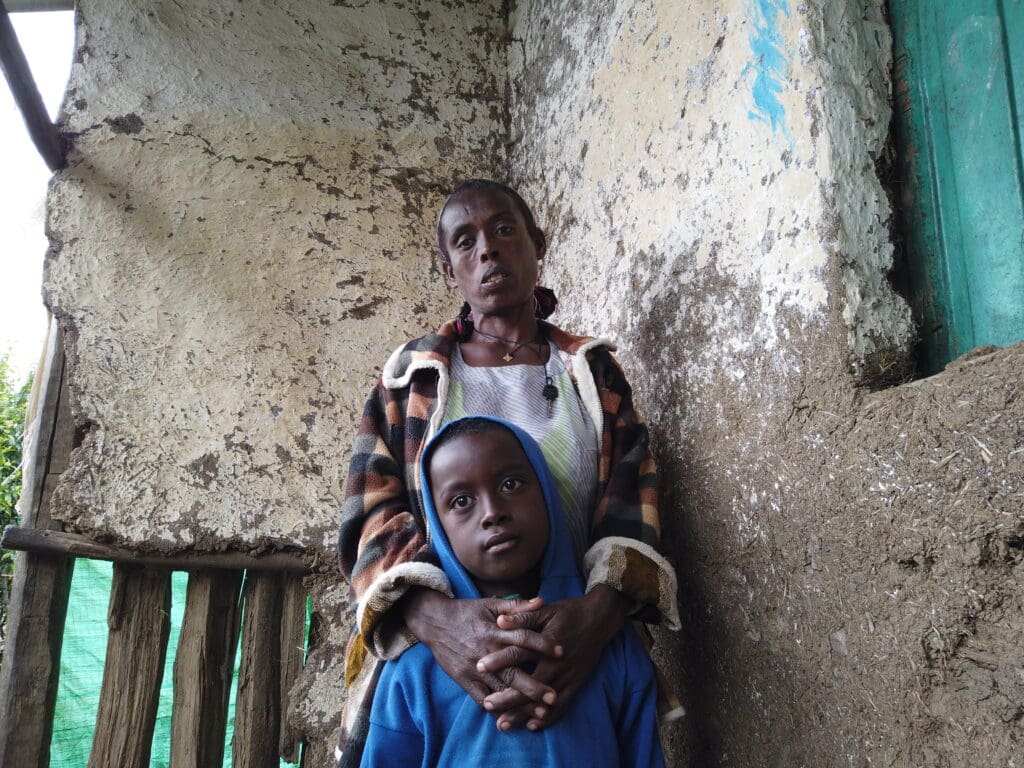WFP Completes First Round of Food Distributions in Afar and Amhara; Still Lacks Necessary Supplies to Reach Targeted Populations in Tigray

ADDIS ABABA – The United Nations World Food Programme (WFP) has completed its first round of food distributions to people impacted by the spread of conflict into Afar and Amhara regions. However, a lack of supplies due to various impediments to the movement of humanitarian aid still sees distributions in Tigray lagging behind.
Since August 15, the U.N. World Food Programme has delivered food to almost 300,000 people in Amhara and Afar. The second round of food distributions has been ongoing in Tigray since May 27 and more than 2.4 million people have been reached with food assistance in the northwest and parts of southern Tigray.
“Anecdotal reports from all three regions suggest that food insecurity is rising as families flee from their homes and have their livelihoods destroyed,” said Michael Dunford, the U.N. World Food Programme’s Regional Director for Eastern Africa.
“In Tigray, the IPC released in June estimated that up to 400,000 people would be facing famine-like conditions by now and as teams struggle to get enough food assistance into the region the situation is becoming increasingly dire. In Afar and Amhara we’ve seen hundreds of thousands of people displaced from their homes and have their livelihoods destroyed. It is absolutely vital that we have the full cooperation and support of all parties to the conflict so that we can reach all affected populations with urgently needed food assistance before we have a humanitarian catastrophe on our hands across all of northern Ethiopia.”
WFP northern Ethiopia operations:
- An additional 1.7 million people are facing emergency levels of hunger in Afar and Amhara regions, where over 840,000 people (700,000 in Amhara and 140,000 in Afar) have been displaced due to the current conflict, according the government estimates.
- Round 1 distributions have been completed in Amhara, reaching more than 210,000 people with beans, cereals and vegetable oil. This includes families who have been displaced due to the conflict and those who have had their homes and livelihoods destroyed.
- The U.N. World Food Programme has also been able to transport more than 2,200 metric tons of food assistance on behalf of partners to Wag Hamra and North Wollo zones of Amhara. However, deliveries to communities located beyond lines of conflict have not been possible so far, threatening to cause a further deterioration in food security for families in those areas.
- In Afar, the U.N. World Food Programme is close to completing round 1 distributions, reaching an initial 80,000 people impacted by the conflict. This number may increase to more than 500,000 people in the next round, subject to a formal request from the Government.
- As of September 24, the U.N. World Food Programme has reached more than 2.4 million people with emergency food assistance across Eastern, Southern and Northwestern zones of Tigray. In the third round of distributions, the U.N. World Food Programme will reach nearly 2.7 million people after taking over Shire town and Tahtay Koraro districts in Northwestern Zone from its non-governmental food partners.
- In September, the U.N. World Food Programme has so far reached almost 200,000 children under 5, as well as pregnant and breastfeeding women, with nutrition assistance across 39 of the 71 targeted woredas in Tigray.
- In Shire town in the Tigray region, teams have only been able to provide 4.5 pounds of beans per person for the food distribution due to unavailability of cereals and oil. Additionally, round 3 distributions, which were due to start early July, have not yet begun due to a lack of food inside Tigray.
- There has been some positive news on the movement of humanitarian aid into Tigray in recent weeks. Five convoys – 171 trucks – entered Tigray between September 5-29, carrying a combined total of 6,150 metric tons of food and nutrition supplies. This is enough to feed more than 360,000 people for one month. Despite these recent convoys, only 11 percent of the humanitarian aid needed has entered the region. Additionally, as of September 30, more than 90 commercial trucks have exited Tigray and are now available for the movement of humanitarian aid into the region.
- Fuel stocks in Tigray are running critically low. Fuel is vital to keep operations running and facilitating the movement of humanitarian aid into and across the region. We need 200,000L of fuel entering Tigray each week to keep operations running.
- Across Ethiopia, the U.N. World Food Programme aims to reach 11.9 million people in 2021 with food, nutrition and cash support and delivering activities to boost communities’ self-reliance and food security.
- The U.N. World Food Programme needs $184 million to continue to scale up its response in northern Ethiopia to save lives and livelihoods to the end of the year. For all activities under its Country Strategic Plan, the U.N. World Food Programme has a funding shortfall of $426 million. Additional funding is vital to allow the U.N. World Food Programme to keep saving and changing lives in Ethiopia.
Video footage of Amhara operations here
# # #
The United Nations World Food Programme is the 2020 Nobel Peace Prize Laureate. We are the world’s largest humanitarian organization, saving lives in emergencies and using food assistance to build a pathway to peace, stability and prosperity for people recovering from conflict, disasters and the impact of climate change.
Follow us on Twitter @WFPUSA, @wfp_media and @wfp_ethiopia




